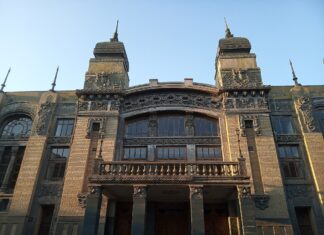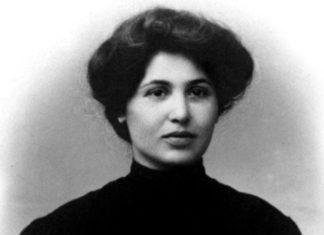By Camilla Alvarez-Chow
TORONTON (Art Asia Pacific) — On August 17, Iranian Armenian abstract painter Sirak Melkonian passed away in Toronto at the age of 93. Melkonian was considered one of the founders of the modern Iranian art movement and was best known for his limited color palette, with works that emphasized lines and forms inspired by nature.
Born in 1931 in Tehran, Melkonian met fellow Iranian Armenian artist Marcos Grigorian (1925–2007) after graduating from high school, a friendship that introduced him to modern European art as Grigorian sent him Italian magazines and newspapers. Inspired by these resources, Melkonian began his artistic career, creating figurative paintings that explore social issues and folk traditions in a style closely aligned to expressionism.
In 1957, Melkonian’s career began with his first solo exhibition at the Estetic Gallery in Tehran. The same year, he also won the Contemporary Iranian Artists Award at the Iran-America Society. The painter continued to garner acclaim as he won the Imperial Court Prize of 1958 at the inaugural Tehran Biennale. He was awarded for the oil-on-canvas work The Prayer (1957), depicting a solemn, kneeling figure in warm, dark tones, and his long-running untitled linocut series (1957–2015) that features the everyday lives of Iranian citizens in monochromatic colors. Melkonian’s success kicked off immediately: he gained international recognition through his participation in the 29th Venice Biennale in 1958, and in the Paris Biennale the following year.
Melkonian went on to study at the Accademia di Belle Arti di Roma in Italy, with the encouragement of his long-time friend Grigorian. However, Melkonian—who was a self-taught artist up until that point—dropped out of the institution to continue experimenting independently. By the early 1960s, abstraction had become prominent in his work. Around the same time, Melkonian traveled to the south of Iran as well as Sistan and Baluchistan, inspiring him to incorporate topographical elements from natural landscapes. His work from then on featured linework intersecting and branching off on the canvas, creating marks that resemble patterns found on tree trunks or jagged mountain sceneries in pale earth tones.
Melkonian founded the “Azad Art Group,” formally known as The Independent Artists Group, in the early 1970s along with Grigorian and other important artists living and working in Iran at the time, including Massoud Arabshahi (1935–2019); Abdolreza Daryabeigi (1930–2012); Morteza Momayez (1936–2005); Gholamhossein Nami (b. 1936); and Faramarz Pilaram (1937–1983). The group was officially introduced to the world at the Tehran International Art Fair in 1974, establishing itself as a collective that, as stated in Honar-e Jadid: A New Art in Iran (2022), a compilation of essays edited by art historian Hannah Jacobi, “challenged the status quo, criticized the prevalence of superficial modern expressions in society and the increasingly profit-driven art world, and were closely aligned with the conceptual art movement.”








